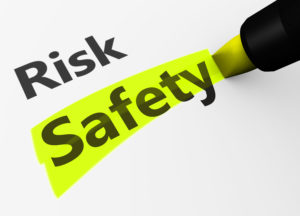With heat waves hitting the western part of the United States, Oregon OSHA is reminding workers of safe practices for working in the heat. They emphasize the importance of preventative measures for heat related illness with their statewide health enforcement manager, Penny Wolf-McCormick, stating in the article found here, “Employers need to take the threat of heat illness seriously, which means acting sooner – not later – to put the appropriate safeguards in place.” No matter where you work, the following practices will keep your team safe in the heat.
Watch for Symptoms:
Train your team to be aware of the signs and symptoms of heat related illness and to watch out for themselves and their coworkers. Some symptoms of heat exposure include dehydration, dizziness, fatigue, headaches, cramps, nausea or vomiting, high body temperature, seizure, and loss of consciousness. The skin may become hot and red or cold, pale, and clammy. A less severe symptom of heat exposure is heat rash, which appears as patches of small, raised spots and can feel itchy or prickly.
Promptly Address Symptoms:
Heat related illness can become life threatening when symptoms are ignored. Fortunately, there are plenty of quick and easy ways to ease the symptoms of heat related illness before they become out of control. Those showing symptoms should move to a cooler area to rest. They should loosen or remove heavy clothing or PPE if it is safe to do so. For example, if employees must wear face masks around others, they should physically distance themselves and remove their mask to cool down. In addition to drinking cool water, it can be applied directly to the skin to bring down and individual’s body temperatures. To help those suffering from heat exhaustion, Oregon OSHA recommends misting them with cool water or applying wet cloths to their skin. If symptoms of heat exhaustion do not go down after a few minutes, 911 should be called.
Drink Plenty of Water:
Dehydration increases the risk of heat related illness. Oregon OSHA recommends drinking one small cup of cool water every 15 to 20 minutes. If a worker is showing signs of heat exhaustion, they should be encouraged to drink cool water unless they are feeling sick to their stomach. Alcohol and caffeine should be avoided because they cause the body to lose water.
Adjust the Work Schedule:
If possible, the most labor-intensive work should be performed during the coolest part of the day. When working in the heat, it is important to take frequent short breaks in a cool location to allow the body to regulate its temperature. This is especially important for new employees whose bodies are not yet acclimated to working in the heat.
Plan and Train:
Employers in labor-intensive industries should have clear policies and procedures in place to prevent heat related illness. These policies and procedures must be effectively communicated through ongoing reminders and training.
Want to know more about promoting safety in the workplace? See our article here.
Remember, empowering your employees with a hotline to report abuses of safety policies will protect your organization and your people.
